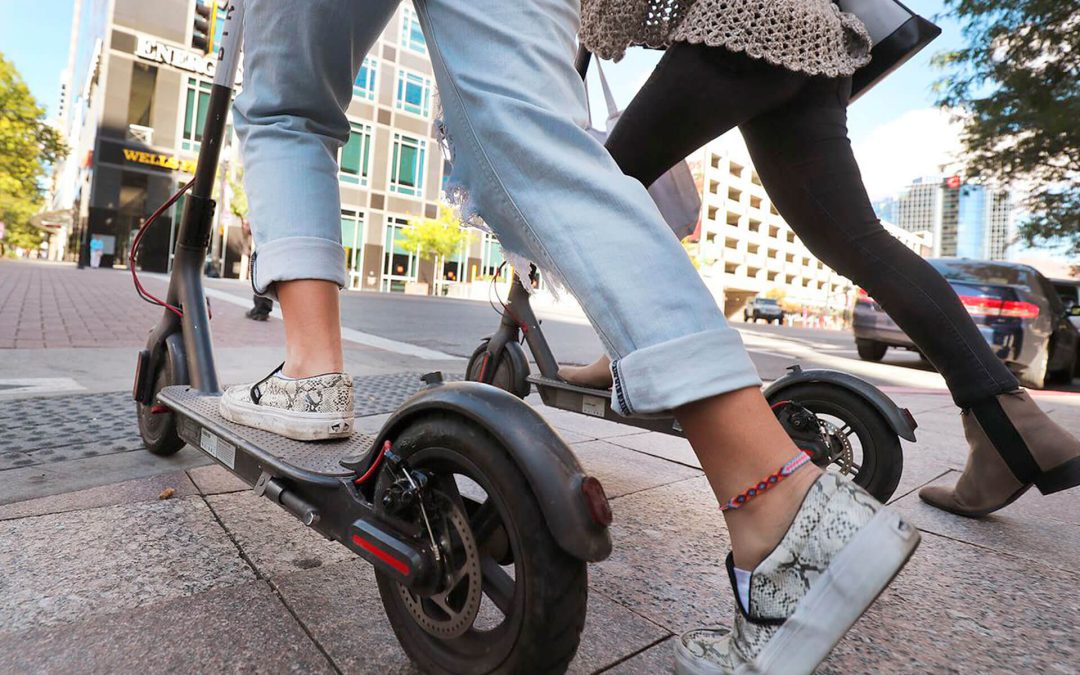Across Europe, the urban landscape is transforming as cities shift towards sustainable modes of transportation. While electric vehicles and revamped public transit systems grab headlines, a subtler but equally important revolution is happening on bike lanes, shared paths, and pedestrianized streets: the rise of micromobility. Micromobility—a category that includes bicycles, e-bikes, scooters, e-scooters, and other small, lightweight vehicles—is changing the way Europeans commute and navigate their cities.

Why Micromobility?

The shift towards micromobility is driven by several factors, including environmental concerns, urban congestion, and the desire for healthier, more active lifestyles. Micromobility solutions are uniquely suited to tackle the “last-mile” problem, bridging the gap between public transit hubs and final destinations. According to a recent EU study, over 60% of all trips in European cities are less than 5 kilometers—making them ideal for micromobility options.

Furthermore, micromobility reduces greenhouse gas emissions, helps alleviate traffic congestion, and provides a practical, low-cost alternative for short urban trips. By replacing short car journeys with micromobility, cities can reduce their carbon footprint, improve air quality, and promote more livable streetscapes.
The Rise of Bike Lanes and Shared Spaces

With increased investment in infrastructure, European cities are making way for cyclists and micromobility users. Cities like Amsterdam and Copenhagen have long been leaders in this space, with extensive, interconnected networks of bike lanes, but newer cities like Paris, Berlin, and Barcelona are quickly catching up.
During the COVID-19 pandemic, many cities accelerated plans to expand bike lane networks to accommodate the surge in cycling. In Paris, for example, the government implemented over 650 km of temporary “coronapistes” (emergency bike lanes), many of which have since become permanent. Similarly, Milan created a 35 km network of new bike lanes almost overnight, converting road space previously dominated by cars into safe, separated lanes for cyclists.
Beyond traditional bike lanes, European cities are experimenting with more innovative approaches, including:
- Cycle Superhighways: These wide, direct bike routes connect suburban areas with city centers, encouraging longer commutes by bike. London and Copenhagen have pioneered these projects, seeing a notable uptick in cycling as a result.
- Greenways and Linear Parks: Paris and Vienna are reimagining former rail lines and industrial corridors as lush, green pathways that prioritize cyclists and pedestrians.
- Car-Free Zones and Shared Streets: Barcelona’s “superblocks” and Brussels’ pedestrianized city center are transforming entire districts into car-free zones, making it safer and more appealing for people to use micromobility options.
The E-Scooter Boom: A European Phenomenon

Beyond bicycles, e-scooters have taken European cities by storm, providing an easy, accessible way to move around. Cities like Berlin, Paris, and Madrid have become hotbeds for e-scooter rentals, with companies like Lime, Bird, and Tier setting up extensive networks of shared e-scooters. The trend has not been without challenges—cities have had to implement new regulations to manage sidewalk clutter and improve safety.

In response, cities are now setting stricter guidelines for shared e-scooter operators, establishing dedicated parking zones, and even developing geofencing technology to restrict speeds in certain areas. These efforts are aimed at integrating e-scooters more seamlessly into existing urban mobility systems, reducing conflicts with pedestrians, and ensuring they remain a viable component of green mobility.
Policy and Funding Support

The EU has been a strong proponent of sustainable urban mobility, and funding from programs like the European Green Deal and Horizon Europe is helping cities develop new micromobility solutions. The EU Urban Mobility Framework aims to promote the use of zero-emission vehicles, expand cycling infrastructure, and foster multimodal mobility hubs that connect micromobility with other forms of transport.
Additionally, cities are creating dedicated offices for cycling and micromobility, ensuring that these solutions are integrated into broader urban planning efforts. For instance, the City of Paris recently appointed a “Bike Commissioner” to oversee its ambitious plan to become a 100% cycling city by 2024.
What’s Next for Micromobility in Europe?

Looking ahead, micromobility in Europe is poised for continued growth and evolution. Key trends to watch include:
- Integration with Public Transit: Cities are working to connect micromobility services with public transportation networks, making it easier for residents to plan multi-modal trips.
- Innovation in Vehicle Design: Expect to see new, more diverse forms of micromobility, including cargo bikes, seated scooters, and even electric mini-cars designed for short city trips.
- Expansion into Suburban Areas: As city centers become increasingly bike-friendly, the focus will shift to connecting micromobility options to the suburbs, ensuring that people can travel sustainably across entire metropolitan regions.
- Enhanced Safety Features: The next generation of shared micromobility vehicles will likely include better lighting, improved braking systems, and even AI-based collision avoidance technology.
Conclusion: A New Era for Urban Mobility
The embrace of micromobility across Europe represents a shift towards cleaner, healthier, and more human-centered urban spaces. While challenges remain—ranging from infrastructure development to safety concerns—the momentum is undeniable. As cities continue to innovate and invest in micromobility, the future of European urban transport is looking greener and more connected than ever before.
For residents and visitors alike, this means more options, more freedom, and more vibrant cities where people, not cars, take center stage.

